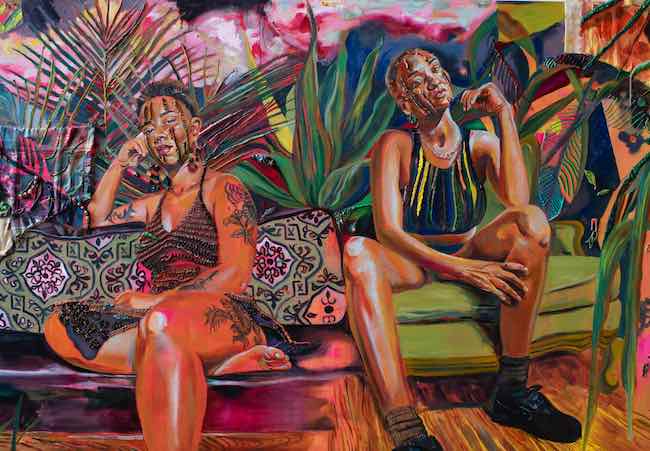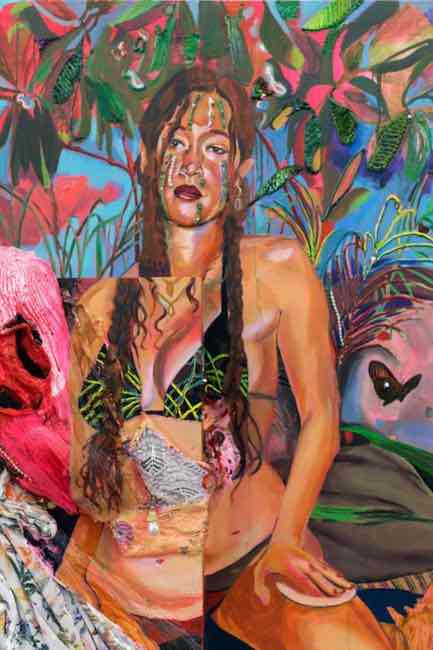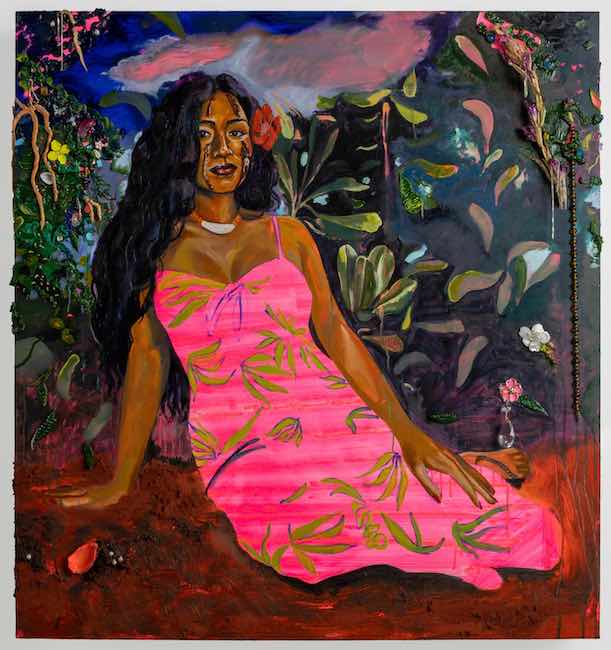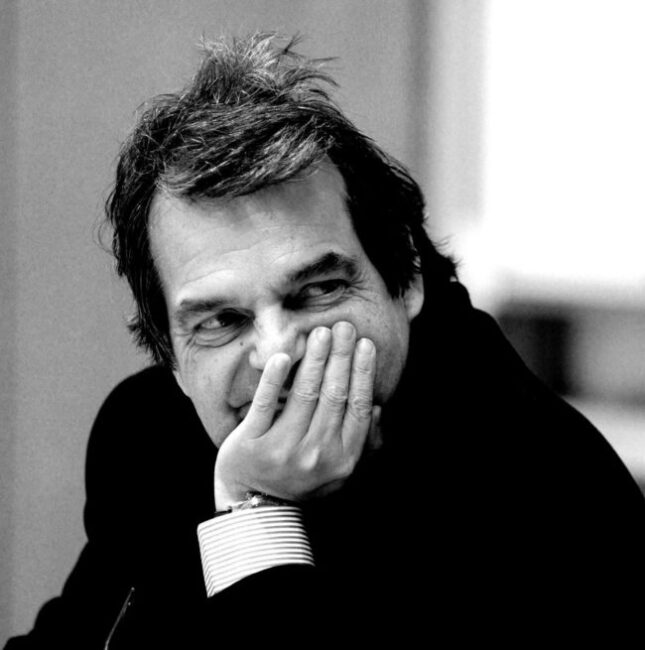Nell’era contemporanea, orientata alla globalizzazione e alla generalizzazione, l’osservazione delle minoranze e la messa in luce di tradizioni e culture completamente sfuggenti alle regole e alle dinamiche occidentali è un terreno quasi inesplorato e l’arte non si sottrae a questo tipo di approccio alla vita attuale; nonostante ciò tuttavia, vi sono stati molti artisti che nel passato hanno rivolto la loro attenzione verso popolazioni indigene e lontane dal punto di vista geografico ma anche culturale e che hanno assunto un atteggiamento aperto e curioso mettendo su tela tutto il fascino che quei popoli lontani avevano esercitato su di loro. Nella contemporaneità il linguaggio espressivo sembra trascurare l’attenzione verso quelle minoranze tranne per il lavoro di alcuni artisti appartenenti a quelle culture e che sono stati in grado di affermarsi a livello internazionale scegliendo di narrare usi, costumi e difficoltà del loro popolo e di tutte le minoranze. La protagonista di oggi appartiene a questo gruppo di artisti.
Durante il percorso di scoperta artistico di quel periodo particolare ed eclettico a cavallo tra la fine dell’Ottocento e l’inizio del Novecento, si andò affermando negli artisti così come nel gusto delle famiglie aristocratiche e benestanti dell’epoca, un forte interesse nei confronti dei paesi oggetto di conquista da parte delle potenze europee e dove era a quel punto possibile spostarsi per osservare non solo il modo di vivere completamente selvaggio rispetto a quello dell’occidente ma anche tutto ciò che apparteneva alle tradizioni espressive e artistiche delle tribù e dei popoli dell’Africa, della Polinesia, della Nuova Guinea. L’interesse artistico di quel periodo venne denominato Primitivismo perché costituì una base da cui poi si svilupparono importanti correnti pittoriche; Pablo Picasso studiò a lungo le maschere indigene e le rielaborò per dare origine ai volti stilizzati e piatti che diedero inizio al suo Cubismo. Ma anche l’Espressionismo ebbe alcuni grandi maestri che basarono gran parte della loro produzione sul raccontare tradizioni locali, come Amedeo Modigliani, talmente affascinato dall’Africa e dalle sue maschere lignee da ispirarsi a quelle linee semplici e basiche per rappresentare i volti delle sue donne dai colli lunghi, oltre alle sue poche sculture eseguite prima che la sua salute gli impedisse di continuare a scolpire. E ancora Paul Gauguin scelse di vivere a Tahiti gli ultimi anni della sua vita e della sua produzione pittorica, letteralmente conquistato dalla bellezza, dal ritmo di vita sereno, dalla semplicità di una società differente da quella falsa e arrivista che respirava in Europa; le scene quotidiane, la dolcezza delle donne polinesiane e il loro fascino quasi inconsapevole, sono stati protagonisti di celeberrime opere d’arte di questo grande maestro espressionista. Ma anche Emil Nolde si imbarcò per la Nuova Guinea dove rimase per sei mesi e dedicò alla cultura indigena molte tele in cui emergeva il suo approccio osservativo nei confronti di un modo di vivere opposto al proprio, a quello occidentale sottilmente considerato come civilizzato e pertanto più giusto.

L’artista Gisela McDaniel invece proviene da una popolazione che costituisce una minoranza, quella dei Chamorro abitanti delle Isole delle Marianne, e sceglie di veicolare al mondo le tradizioni, i costumi di popoli a volte conosciuti solo superficialmente eppure fortemente vivi proprio per la scelta di non rinunciare mai a tutto il tessuto culturale e conoscitivo delle origini in nome di un progresso troppo spesso più dannoso che utile; il suo stile è Realista e attraverso le sue opere mette in evidenza abiti tradizionali, trucco tribale, sfondi delle case tipiche ma anche la contaminazione della modernità, quel volersi adeguare ai cambiamenti senza però rinnegare o dimenticare le origini, tutto ciò che appartiene da sempre alle conoscenze e alla cultura dei popoli. Ma la McDaniel non si ferma qui, la sua arte nasce dall’esigenza di superare un trauma, una violenza sessuale che era rimasta dentro di lei come una profonda ferita da cui uscire sarebbe stato troppo difficile se non avesse trovato un canale comunicativo quasi catartico, irrazionale e razionale al tempo stesso poiché, come accadde anche a Frida Kahlo sebbene per una circostanza oggettiva differente, esprimere a parole gli eventi e il dolore fisico e psicologico che ne deriva è troppo difficile.

Ecco dunque che si fa strada la possibilità per lei di aiutare tante altre donne a trovare il coraggio di lasciar fuoriuscire il dolore di una ferita, quella della violenza sessuale, e così Gisela McDaniel crea un tipo di arte in cui aiuta se stessa ma anche altre donne che hanno subito il suo stesso tipo di violenza, coinvolgendole in prima persona nella scelta di oggetti, della posa, del luogo in cui preferiscono essere immortalate, trasformando così la figura femminile non più in vittima bensì in soggetto capace di prendere in mano la propria vita nonostante tutto, di reagire e di apparire più forte, più coraggiosa, più sfrontata, come se le sue donne volessero gettare un guanto di sfida al mondo maschile che avrebbe voluto farle soccombere.

L’opera Build in my soul sembra essere una ferma presa di posizione, un voler affermare il diritto delle due donne ad avere una propria forte personalità senza per questo essere viste come minacce all’ordine di una società ancora troppo maschile e dunque convinta di dover tenere il mondo femminile in posizione di silenzio, quasi di inferiorità; le due ragazze sono invece delle guerriere, delle ribelli, si evince dalla loro posizione, dal modo in cui mescolano elementi tradizionali come gli abiti e i segni sul volto con scarpe moderne, hip hop, senza il timore di essere giudicate, combattendo per il loro desiderio di emergere.

In What she saw where she went Gisela McDaniel svela un altro elemento pittorico che la contraddistingue, quello dell’interattività, quello del chiedere ai suoi personaggi di inserire oggetti a loro cari, di scegliere il tema che desiderano venga raccontato attraverso l’attento e sensibile sguardo dell’artista, per evocare un ricordo, un punto di vista, una sensazione. In questo dipinto l’artista rende protagoniste tre donne, tre generazioni diverse, quasi come se l’essere andate e l’aver visto del titolo appartenessero alla stessa persona che oltrepassa il confine temporale e si trova davanti all’osservatore, replicata e immortalata nelle varie fasi della sua esistenza; oppure al contrario l’anziana e più saggia diviene riferimento per le due più giovani, forse madre e figlia, che si lasciano guidare dall’esperienza della donna più grande, dal suo aver già visto e compreso ciò che loro non possono ancora conoscere.

E poi in Sakkan Eku LA Gisela McDaniel riproduce se stessa, mettendo in luce e a nudo la sua tristezza, il rammarico nei confronti di un accadimento che non ha potuto evitare, che si è verificato malgrado tutto e che è rimasto indelebile nella sua memoria senza possibilità di poter cancellare quella macchia di dolore; la sua espressione è infatti malinconica e sembra voler ripercorrere la stanza della memoria in cui è avvenuto l’evento e a cui lega oggetti di quel frammento di memoria, chiudendo il ricordo in un rettangolo, come fosse una scatola deformante perché è quella la sensazione che le ha lasciato addosso.

Non dimentica mai le sue origini materne Gisela McDaniel perché il legame con le radici più profonde costituisce una base per il presente da portare con sé ovunque si vada, anzi, il suo suggerimento forse è quello di adeguare e armonizzare la propria cultura a quella nuova senza mai dimenticare da dove si è partiti, ed è ciò che invita a fare anche alle donne appartenenti alle minoranze etniche che ama ritrarre, micronesiane, indigene di Turtle Island, asiatiche, latine, spesso di razza mista, come lei.

La donna deve far sentire la sua voce, deve combattere gli abusi di cui spesso è vittima e deve combattere per cambiare un mondo ancora troppo maschile, queste sono le tematiche che Gisela McDaniel lascia fuoriuscire anche attraverso parole che sembrano diffondersi dalle sue opere, attraverso cui le sue protagoniste ripercorrono il loro trauma personale per cominciare il percorso di guarigione. Gisela McDaniel espone regolarmente negli Stati Uniti, ma anche ha all’attivo mostre nel Regno Unito e in Svizzera. Ha esposto all’Institute of Contemporary Art Boston (ICA) di Boston e al Cincinnati Contemporary Art Center. È rappresentata dalla Pilar Corrias Gallery di Londra.
GISELA MCDANIELS-CONTATTI
Email: info@pilarcorrias.com
Sito web: https://www.giselamcdaniel.com/
Facebook: https://www.facebook.com/gisela.mcdaniel
Instagram: https://www.instagram.com/giselamcdaniel/
The voice of minorities in Gisela McDaniel’s Realism, between executive interactivity and the transformation of art into healing therapy
In the contemporary era, geared towards globalisation and generalisation, the observation of minorities and the highlighting of traditions and cultures that completely escape Western rules and dynamics is almost unexplored terrain, and art does not shy away from this type of approach to current life. Despite this, however, there have been many artists in the past who have turned their attention to indigenous and geographically but also culturally distant peoples and who have taken an open and curious attitude, putting all the fascination that those distant peoples had exerted on them onto canvas. In contemporary times, the language of expression seems to neglect attention to those minorities, except for the work of a few artists belonging to those cultures and who have been able to establish themselves internationally by choosing to narrate the customs and difficulties of their people and of all minorities. Today’s protagonist belongs to this group of artists.
During the artistic discovery of that particular and eclectic period between the end of the 19th century and the beginning of the 20th century, was established in artists as well as in the taste of the aristocratic and wealthy families of the time, a strong interest in countries that were conquered by European powers and where it was then possible to travel to observe not only the completely wild way of life compared to that of the West, but also everything that belonged to the expressive and artistic traditions of the tribes and peoples of Africa, Polynesia and New Guinea. The artistic interest of that period was called Primitivism because it formed a basis from which important painting currents developed; Pablo Picasso studied indigenous masks at length and reworked them to give rise to the stylised, flat faces that gave rise to his Cubism. Also Expressionism had some great masters who based much of their production on recounting local traditions, such as Amedeo Modigliani, who was so fascinated by Africa and its wooden masks that he was inspired by those simple, basic lines to depict the faces of his long-necked women, as well as his few sculptures made before his health prevented him from continuing to sculpt.
And again Paul Gauguin chose to live in Tahiti the last years of his life and of his painting production, literally conquered by the beauty, the serene rhythm of life, the simplicity of a society different from the false and careerist one he breathed in Europe; the everyday scenes, the sweetness of Polynesian women and their almost unconscious charm, were the protagonists of celebrated paintings by this great expressionist master. But also Emil Nolde embarked for New Guinea where he stayed for six months and dedicated many canvases to the indigenous culture in which emerged his observational approach to a way of life opposed to his own, to that of the West subtly regarded as civilised and therefore more just. The artist Gisela McDaniel, on the other hand, comes from a population that constitutes a minority, that of the Chamorro inhabitants of the Mariana Islands, and chooses to convey to the world the traditions, the customs of peoples sometimes known only superficially yet strongly alive precisely because of her choice never to renounce the entire cultural and cognitive fabric of their origins in the name of progress that is too often more harmful than useful; her style is Realist and through her works she highlights traditional clothing, tribal make-up, the backgrounds of typical houses, but also the contamination of modernity, that desire to adapt to change without, however, denying or forgetting the origins, everything that has always belonged to the knowledge and culture of peoples. But McDaniel does not stop there, her art stems from the need to overcome a trauma, a sexual violence that had remained within her like a deep wound from which it would have been too difficult to escape if she had not found a channel of communication that was almost cathartic, irrational and rational at the same time because, as also happened to Frida Kahlo albeit for a different objective circumstance, expressing events and the physical and psychological pain that ensues is too difficult in words.
And so it is that the opportunity arises for her to help many other women to find the courage to let out the pain of a wound, that of sexual violence, and so Gisela McDaniel creates a type of art in which she helps herself but also other women who have suffered the same type of violence involving them in first person in the choice of objects, the pose, the place in which they prefer to be immortalised, thus transforming the female figure no longer into a victim but into a subject capable of taking charge of her own life in spite of everything, of reacting and appearing stronger, more courageous, more shameless, as if her women wanted to throw down a gauntlet to the male world that would have wanted them to succumb. The work Build in my soul seems to be a firm stance, a desire to affirm the right of the two women to have their own strong personalities without being seen as threats to the order of a society that is still too masculine and therefore convinced that it must keep the female world in a position of silence, almost of inferiority; the two girls are instead warriors, rebels, as can be seen from their position, from the way they mix traditional elements such as clothes and marks on their faces with modern, hip hop shoes, without fear of being judged, fighting for their desire to emerge. In What she saw where she went Gisela McDaniel unveils another pictorial element that distinguishes her, that of interactivity, that of asking her characters to insert objects dear to them, to choose the theme they wish to be told through the artist’s attentive and sensitive gaze, to evoke a memory, a point of view, a feeling. In this painting, the artist makes three women protagonists, three different generations, almost as if having gone and having seen of the title belonged to the same person who crosses the temporal boundary and stands before the observer, replicated and immortalised in the various phases of her existence; or on the contrary, the older and wiser one becomes a reference for the two younger ones, perhaps mother and daughter, who let themselves be guided by the experience of the older woman, by her having already seen and understood what they cannot yet know.
And then in Sakkan Eku LA Gisela McDaniel plays herself, revealing and laying bare her sadness, her regret at an event that she could not avoid, that occurred in spite of everything and that remained indelible in her memory with no possibility of erasing that stain of pain; her expression is in fact melancholic and seems to want to retrace the room of memory in which the event took place and to which she attaches objects from that fragment of memory, enclosing the memory in a rectangle, as if it were a deforming box because that is the feeling it has left on her. She never forgets her maternal origins, Gisela McDaniel, because the link with her deepest roots constitutes a basis for the present that she takes with her wherever she goes; indeed, her suggestion is perhaps to adapt and harmonise one’s own culture with the new one without ever forgetting where one started from, and this is what she invites to do the women belonging to the ethnic minorities she likes to portray, Micronesians, Turtle Island natives, Asians, Latinas, often of mixed race, like herself. Women must make their voices heard, they must fight the abuse they often suffer, and they must fight to change a world that is still too masculine, these are the themes that Gisela McDaniel also lets out through words that seem to spread from her artworks, through which her protagonists go through their personal trauma to begin the journey of healing. Gisela McDaniel exhibits regularly in the United States, but also has exhibitions in the United Kingdom and Switzerland. She has exhibited at the Institute of Contemporary Art Boston (ICA) in Boston and the Cincinnati Contemporary Art Center. She is represented by Pilar Corrias Gallery in London.














